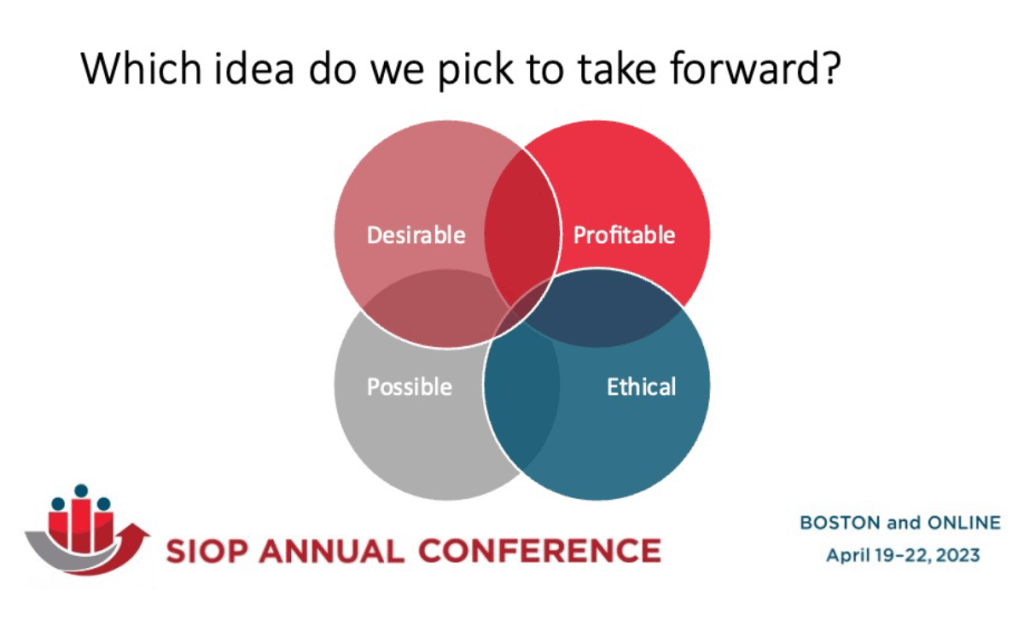I recently returned from Boston, where I had the privilege of co-facilitating workshops on “Future Storming” with two great innovators from BTS consulting, Lynn Collins and Sandra Hartog, at the SIOP (Society for Industrial and Organizational Psychology) annual conference.
We led two groups of I/O psychologists through a replicable innovation process that we believe helps organizations reduce the risk of failure in the talent market. “Future-storming,” also known as “future-back thinking,” helps businesses stay ahead of the curve and prepare for future challenges. This can help companies avoid being left behind by market trends or technological advances.
The real magic of this process, however, is the level of collaboration, cooperation and innovation it inspired from these psychologists, who were split into three- to five-person working groups.
“What a provocative exercise that challenged our thinking and exploded our creativity, all in the spirit of helping people and organizations become their best selves,” said Megan Leasher, who participated in our workshop and is also the SIOP Workshop Chair.
We coached the participants to use specific ideation behaviors and provocations to grapple with talent challenges they might encounter in a variety of workplace “future states.” We started with 10 talent trends gleaned from research by Brandon Hall Group, BTS and other sources and introduced the future states the trends could lead to.
Each group selected three future states to explore and then came up with situations that might occur in the combined future states. Each group selected one situation to solve, focusing specifically on the impact on talent and talent strategy. The goal was to try to balance several considerations:
We helped the groups think outside the box. They came up with as many ideas as possible in a short period of time. We urged suspending judgment on their viability or quality, getting comfortable with “half-baked ideas” and considering what creative thinkers — ranging from someone they knew to luminaries such as Albert Einstein, Beyonce and Steve Jobs or characters such as Santa Claus, Tinkerbell and Harry Potter — would do.
The exercise created a living laboratory where different experiences, thought processes, biases, and personalities collided in various ways. The result was a wide range of talent-driven, future-focused solutions. They ranged — depending on the group composition and interaction of personalities — from the same strategies used today but applied to a very different future, to truly innovative, almost unimaginable solutions specifically linked to the future states.
It was also great to see so many of the talent management professional competencies from Brandon Hall Group’s certification program — including design thinking, ideation, business acumen, inclusiveness, collaboration and learning agility — leveraged during the workshop.
Most importantly, almost every participant left the workshop believing this was a process they could take back to their organizations and use in various ways to spur discussion, creative ideas and innovative strategies related to talent development. This approach is good for:
- Brainstorming on issues that have been difficult to gain traction on
- Bringing together people from different functions who rarely get an opportunity to share ideas
- Shaking up regularly scheduled meetings where new energy and ideas are needed
The interaction in our workshop room was inspirational and demonstrated what it will take for organizations to truly adapt and thrive in the future of work.
“It was a blast,” said my colleague Lynn Collins of BTS. “I loved the big thinking and energy that you all brought. We all learned so much about the possibilities of the future and how we can prepare so that we are the force for disruption rather than being disrupted!”

